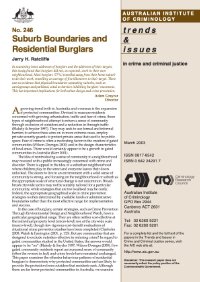By David W.M. Sorensen
During the 18-year period 1990 to 2007, the number of reported residential burglaries (indbrud i beboelse) was very stable. This changed in 2008 to 2010, when burglary increased by 30% (averaged over these three years) as compared to the previous 18-year average. Seen in its most extreme light, the number of reported burglaries in 2009 was 65.3% higher than in 2005. Little solid evidence exists as to why residential burglary increased so dramatically in 2008 and 2009. The current report examines this question using POLSAS data on 234,745 residential burglaries reported in Denmark during the six-year period 2005-2010, plus data on long term crime trends (1990-2010) and other social indicators. The report begins with a comparison of the rise in burglary to trends in overall Danish property crime. This reveals that the increase in burglary is far greater than that for any other major crime category. Burglary is therefore unique in this regard. Trends in Danish burglary are then compared to burglary trends in the EU and other Nordic countries to see if Denmark’s increase is part of a wider EU/Nordic phenomenon. The EU countries worst hit by the economic recession of 2008 experienced the sharpest increases in burglary. Denmark shares little in common with these countries, but shares much in common with Sweden, which also experienced a (far more modest) rise in burglary. In sum, domestic and international trend analyses reveal that the increase in Danish burglary probably has multiple causes emanating from both within and outside Denmark.
Copenhagen: Danish Crime Prevention Council, 2011. 64p.





















